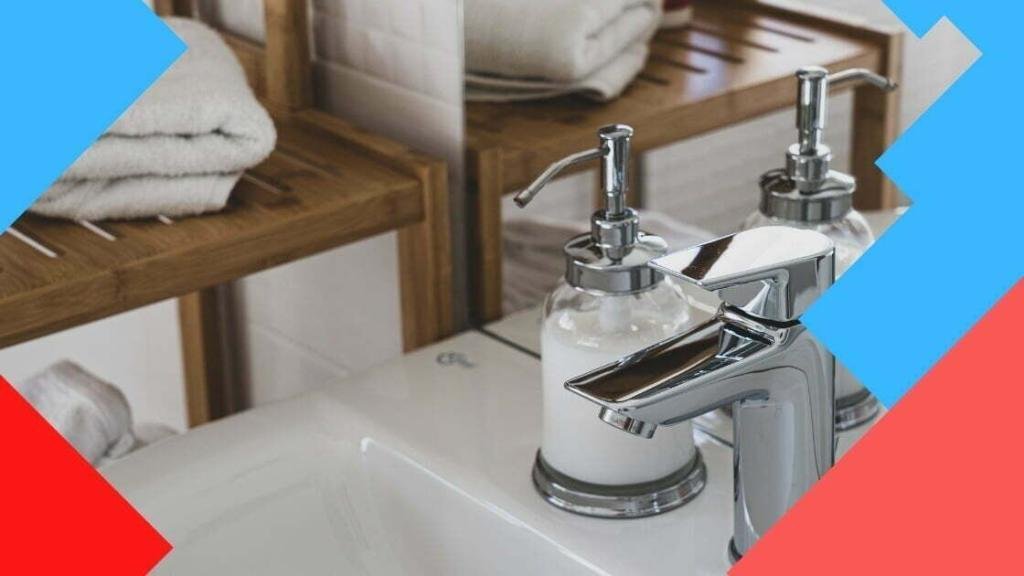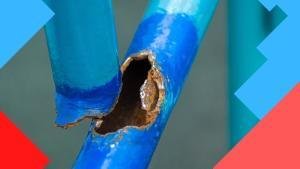
You probably can handle a leaky faucet by yourself, but the kitchen faucet may prove to be more challenging. All that clanking and squeaking and water spraying may make you realize you need help from a professional plumber.
However, there are some faucet problems you can hope to resolve on your own. Read on to find out when you can be your plumber and when a water heater is too hot.
How Long Should a Faucet Last?
Modern bathroom and kitchen faucets are pretty sturdy and well-engineered, and they can last up to 10 years depending on how hard your water is and other factors.
Many people decide to replace a faucet purely for design reasons when remodeling.
However, there are some more practical reasons that may lead to faucet replacement like:
- The faucet finish is worn away;
- The handle is cracked and discolored;
- The aerator or sprout are corroded and worn out, making aerator replacement impossible;
- All internal parts are worn out, so replacing one part like an O-ring, screws, or valve is not enough to make the faucet work again.
Common Faucet Problems and How to Fix Them
When it comes to faucet plumbing problems, there are always minor and major problems that will be labeled as emergencies.
However, the following plumbing problems can be fixed with a bit of healthy logic and proper tools.
1. Screeching Faucet
“That annoying noise of screeching or squealing”
Your problem is the rubber washer in your faucet that tends to harden over time. Rubber washers are usually found in older faucet models, so you have two choices here.
You can replace the whole faucet with a newer model, or you can buy a faucet rubber washer kit at your local hardware store and follow the instruction on the package.
2. Clanking and Clicking Faucet
Other than screeching sounds coming from your faucet, you should also be wary of any clanking and clicking sounds that may indicate a mechanical failure.
Either that or there’s a problem with your pipes, in which case you should contact the nearest plumber for a pipe inspection service that will help you uncover a pipe leak or breakage.
However, if you believe your faucet is the source of the noise, dismantle the faucet, inspect the parts for cracks and assemble it again, making sure you tighten everything well.
3. Squeaky Handle
Your faucet handle is getting harder to use as time goes by, and now there’s a squeaky sound whenever you move the handle? It’s likely the faucet stem that can become worn out over time.
This problem, though, has a straightforward solution- dismantle your faucet and coat the stem with some plumber grease, then reassemble your faucet. Now, your faucet handle will be easier to use and without that awful sound.
4. Spitting Faucet
Besides having a unique design and durability, a perfect faucet will also have outstanding performance.
The number 1 task every faucet has is to create a consistent and smooth-looking stream of water whenever you turn the tap on. And the minute you notice an inconsistent water flow that can only be described as ”spitting”, you should know your faucet is due for some TLC.
This problem usually arises when the aerator is clogged with mineral deposits. For those who don’t know, the aerator is the cap that goes on the mouth of the faucet, and you can easily screw it on and off. You can also replace the aerator if your old one gets too worn out.
5. Removing the Tub Spout
Your tub spout is worn out, and you want to replace it, but you just can’t remove it no matter what you do. One of the tools all professional plumbers in Los Angeles have is the ”strap wrench”.
They use it to remove the tub spout. However, you can do the same with a pair of slip-joint pliers and a bit of skill and patience. Just jam the handles into the mouth of the spout and twist the spout counterclockwise.
6. The Dripping Faucet
We all faced this annoying faucet issue with so many people waking up in the middle of the night. So how do you fix it?
The quick fix would be to tie a rubber around the mouth of the faucet so that the water drips down the rubber silently. However, you may want to deal with this differently, but it will require a bit more knowledge, will, and puzzle skills.
Faucet Type
The first thing you should know is that there are four different kinds of faucets- compression, ceramic disk, cartridge, and ball type. The compression faucet type is the only one that relies on a rubber washer to seal the valve, while the other three have an O-ring or neoprene that can be blamed for the leak.
So how do you fix a leaking faucet?
The first thing you’ll want to do is shut off the water under the tap. Next, cover the drain with a rag, so you don’t lose any parts down the drain, and tape the jaws of the wrench you’ll be using with duct tape (to avoid scratches). You can also prepare a water-vinegar mixture to wash away any mineral deposits from the faucet parts.
Once you dismantle the faucet, inspect every part carefully for cracks and rust because if you find any, know that you need to replace that part. Luckily you can find almost any part of the faucet in hardware stores and buy it separately. If your only problem is a mineral deposit, try soaking the parts and cleaning them thoroughly.
Still can not repair the leaking faucet, or need a hand to install a new faucet? Contact Mr. Speedy Plumbing. We will take care of your leaky faucet, and all other kitchen plumbing issues anywhere in Los Angeles in no time.



